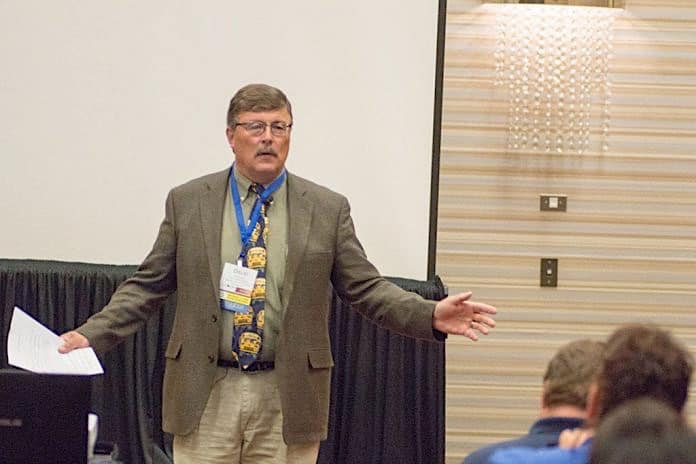With updated federal standards for Head Start expected to be detailed later this year, student transporters explored what the changes might mean for school bus drivers and monitors as well as for operations.
David Stoeger, director at large for the Wyoming Head Start Association and a transportation and safety specialist with the Wyoming Child & Family Development, led the discussion on the effect of the new federal standards on training and on the preschool student population served, especially those with disabilities.
“It’s imperative that you have the right people driving the bus. Bus drivers are often put in the category of truck drivers,” Stoeger began during the session on July 24. He explained that the Head Start program is modeled all over the country to exceed standards, not merely to meet them.
Stoeger noted that if Head Start grantees receive even a penny from the federal government will need to know how to navigate the new rules. “There is no excuse – you must follow the guidelines,” he added.
These apply to state and federal organization as well as Department of Family Services and Native American tribes. Stoeger addressed the workshop attendees by saying, “Know all the guidelines for the program you are with.” In addition, he advised to be prepared for regular Head Start inspections of transportation operations, which will gauge agency compliance with driver training rules as well as ensuring vehicles and equipment meet all standards.
Stoeger pointed out one of the biggest changes is a regulation that requires students in the classroom six hours a day instead of the previous 3.5 hours. The time changes impact the hours for bus drivers and wages, and there could also be a demand for more drivers and buses at at time when there is a shortage qualified candidates to put behind the wheel and Head Start agency budget constraints impact the ability to purchase new vehicles.
Head Start Guideline 1310, which is being renamed, is a key point regarding leaving children behind on the bus at the conclusion of routes, Stoeger added. Attendees were encouraged to keep a plan in place such as an accounting system that counts children on the bus three times. He stressed the importance of constantly counting the children on and off the the bus, and being certain they are constantly supervised.
Also, he advised knowing where all the safety equipment is located on and around the bus, training on which students must be in harnesses and creating student seating charts.
Stoeger said that Wyoming Head Start requires a minimum of two annual safety inspections of its buses. He added that bus drivers have the right to know what’s going on with transported students who have special needs and IEP’s.
Other highlights of Head Start training include the logging of any type of training, received by a driver, drug testing, criminal background checks, monitoring CDL licenses, and the importance of keeping the driver’s doctor’s exams on file.
Attendee Randy Brewer, transportation and maintenance team leader for Rock-Walworth County Services Head Start in Wisconsin, said there are a lot of changes in his department. “Transportation is a challenge for new routes that are needed to accommodate the newly mandated 6 hour all day school session,” he explained.
Brewer added that Head Start funding is based upon a five-year federal grant. The funding, he said, is appropriately dispersed channeling some funds toward home based service where special family resource workers go to student homes.















